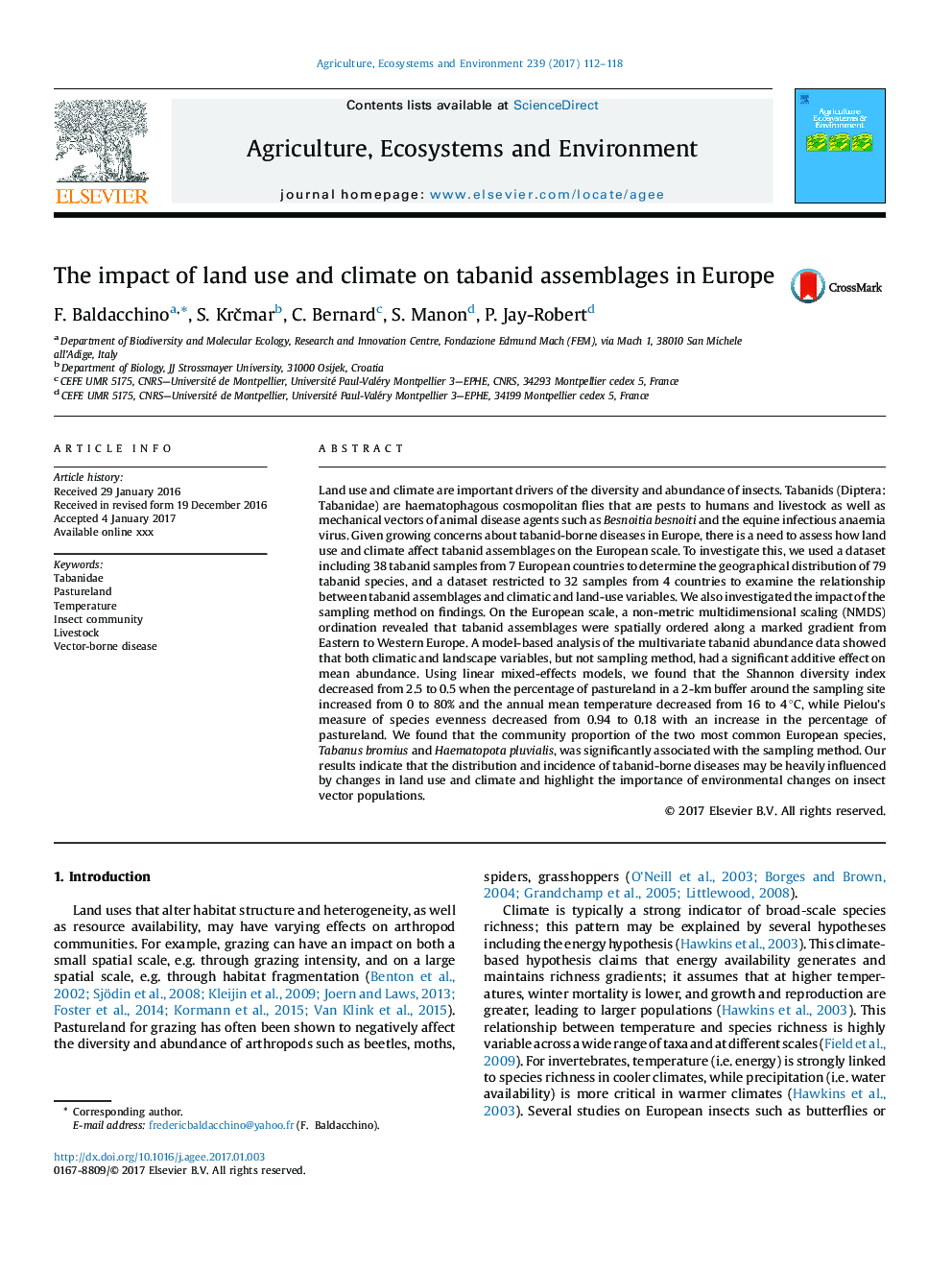| کد مقاله | کد نشریه | سال انتشار | مقاله انگلیسی | نسخه تمام متن |
|---|---|---|---|---|
| 5537917 | 1552013 | 2017 | 7 صفحه PDF | دانلود رایگان |
عنوان انگلیسی مقاله ISI
The impact of land use and climate on tabanid assemblages in Europe
ترجمه فارسی عنوان
تأثیر استفاده از زمین و آب و هوا در مجموعه های تابان در اروپا
دانلود مقاله + سفارش ترجمه
دانلود مقاله ISI انگلیسی
رایگان برای ایرانیان
کلمات کلیدی
موضوعات مرتبط
علوم زیستی و بیوفناوری
علوم کشاورزی و بیولوژیک
علوم زراعت و اصلاح نباتات
چکیده انگلیسی
Land use and climate are important drivers of the diversity and abundance of insects. Tabanids (Diptera: Tabanidae) are haematophagous cosmopolitan flies that are pests to humans and livestock as well as mechanical vectors of animal disease agents such as Besnoitia besnoiti and the equine infectious anaemia virus. Given growing concerns about tabanid-borne diseases in Europe, there is a need to assess how land use and climate affect tabanid assemblages on the European scale. To investigate this, we used a dataset including 38 tabanid samples from 7 European countries to determine the geographical distribution of 79 tabanid species, and a dataset restricted to 32 samples from 4 countries to examine the relationship between tabanid assemblages and climatic and land-use variables. We also investigated the impact of the sampling method on findings. On the European scale, a non-metric multidimensional scaling (NMDS) ordination revealed that tabanid assemblages were spatially ordered along a marked gradient from Eastern to Western Europe. A model-based analysis of the multivariate tabanid abundance data showed that both climatic and landscape variables, but not sampling method, had a significant additive effect on mean abundance. Using linear mixed-effects models, we found that the Shannon diversity index decreased from 2.5 to 0.5 when the percentage of pastureland in a 2-km buffer around the sampling site increased from 0 to 80% and the annual mean temperature decreased from 16 to 4 °C, while Pielou's measure of species evenness decreased from 0.94 to 0.18 with an increase in the percentage of pastureland. We found that the community proportion of the two most common European species, Tabanus bromius and Haematopota pluvialis, was significantly associated with the sampling method. Our results indicate that the distribution and incidence of tabanid-borne diseases may be heavily influenced by changes in land use and climate and highlight the importance of environmental changes on insect vector populations.
ناشر
Database: Elsevier - ScienceDirect (ساینس دایرکت)
Journal: Agriculture, Ecosystems & Environment - Volume 239, 15 February 2017, Pages 112-118
Journal: Agriculture, Ecosystems & Environment - Volume 239, 15 February 2017, Pages 112-118
نویسندگان
F. Baldacchino, S. KrÄmar, C. Bernard, S. Manon, P. Jay-Robert,
